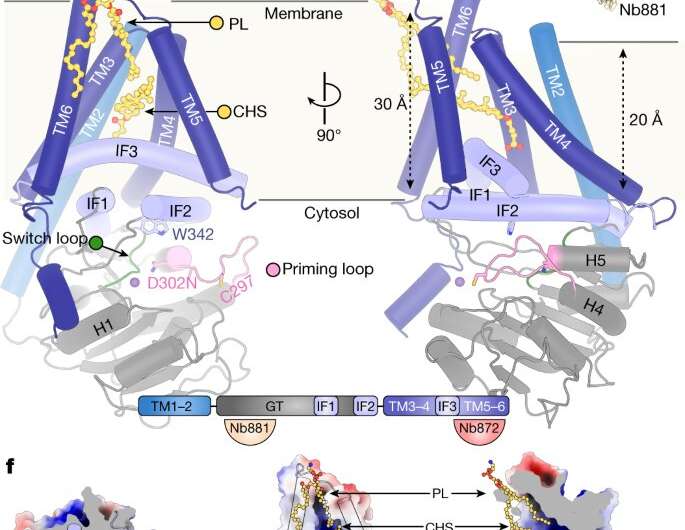Hyaluronic acid research could spur new therapeutics

For more than two decades, scientists have puzzled over how vertebrates make the essential polysaccharide hyaluronic acid, which has broad medical applications. One team took a different tack and solved the mystery.
As many beauty enthusiasts know, hyaluronic acid is a superfood for skin. Found in sheet masks, moisturizers, and more, the molecule leaves the face feeling supple and smooth.
Our bodies naturally produce hyaluronic acid to hydrate cells, heal wounds, and lubricate joints. The molecule also helps form new tissues and plays a role in cancer metastasis.
"It's absolutely important and essential in vertebrates," says Jochen Zimmer, a molecular biologist at the University of Virginia who was recently selected as a Howard Hughes Medical Institute Investigator.
Scientists, however, have long puzzled over how hyaluronic acid, also called hyaluronan, is formed. Though they have known for roughly 20 years that an enzyme called hyaluronan synthase (HAS) guides the process, the "intricate molecular details of how HAS stitches individual sugar molecules together" remained a mystery, says Phillip Stansfeld, a computational biophysicist at the University of Warwick.
Now, Stansfeld, Zimmer, and their colleagues have figured it out. The team captured the 3D structure of a viral form of HAS, which is highly similar to its human counterpart, and described how the enzyme produces hyaluronic acid, they report March 30, 2022, in the journal Nature.
The work could one day allow scientists to tweak HAS and potentially develop new hyaluronic acid-based biomaterials. Engineered hyaluronic acids could serve as artificial scaffolds to aid wound healing, dermal fillers for use in cosmetic or reconstructive surgeries, and perhaps even anti-cancer treatments. "Being able to produce hyaluronic acid in a clean, chemically defined form as a biomaterial would be tremendously helpful," Zimmer says.
Despite these potential applications, the structure of HAS had eluded researchers for years. The traditional approach of X-ray crystallography—where scientists purify a protein, grow it as a crystal, then blast it with X-rays to reveal the structure—looked dismal. No one seemed to be able to crystallize HAS.
Zimmer's team struggled for nearly a decade before they realized that the key was to try a completely different technique, one that doesn't rely on crystals: cryo-electron microscopy (EM). Instead, cryo-EM works by shooting a beam of electrons at a frozen sample and snapping thousands of images. A computer then uses the images to piece together a high-resolution 3D structure.
To boost their chances of success, Zimmer's team attached tiny proteins called nanobodies to either end of HAS. This made the enzyme bigger and its shape more irregular, which helped the software calculate its structure, explains Finn Maloney, a postdoc in Zimmer's lab.
The group screened nearly 40 nanobodies before finding a suitable pair to create the "HAS sandwich." Then, the team captured images of five other structures of the enzyme taken during different stages of the hyaluronic acid synthesis process.
Collectively, the images show how HAS alternatively adds two sugars (N-acetylglucosamine and glucuronic acid) to the growing polysaccharide chain while simultaneously pushing the chain out of the cell. They also reveal how the enzyme kicks off the entire process.
Zimmer's team is now studying human HAS and is trying to understand how the enzyme produces polymers of different lengths. Scientists have previously linked high-molecular weight hyaluronic acids with healthy tissues and low-molecular weight hyaluronic acids with inflammation and metastasis. If researchers could find a way control the length of hyaluronic acid artificially, they might have a tool to tweak many physiological processes, Zimmer says.
More information: Finn P. Maloney et al, Structure, substrate recognition and initiation of hyaluronan synthase, Nature (2022). DOI: 10.1038/s41586-022-04534-2
Journal information: Nature
Provided by Howard Hughes Medical Institute




















